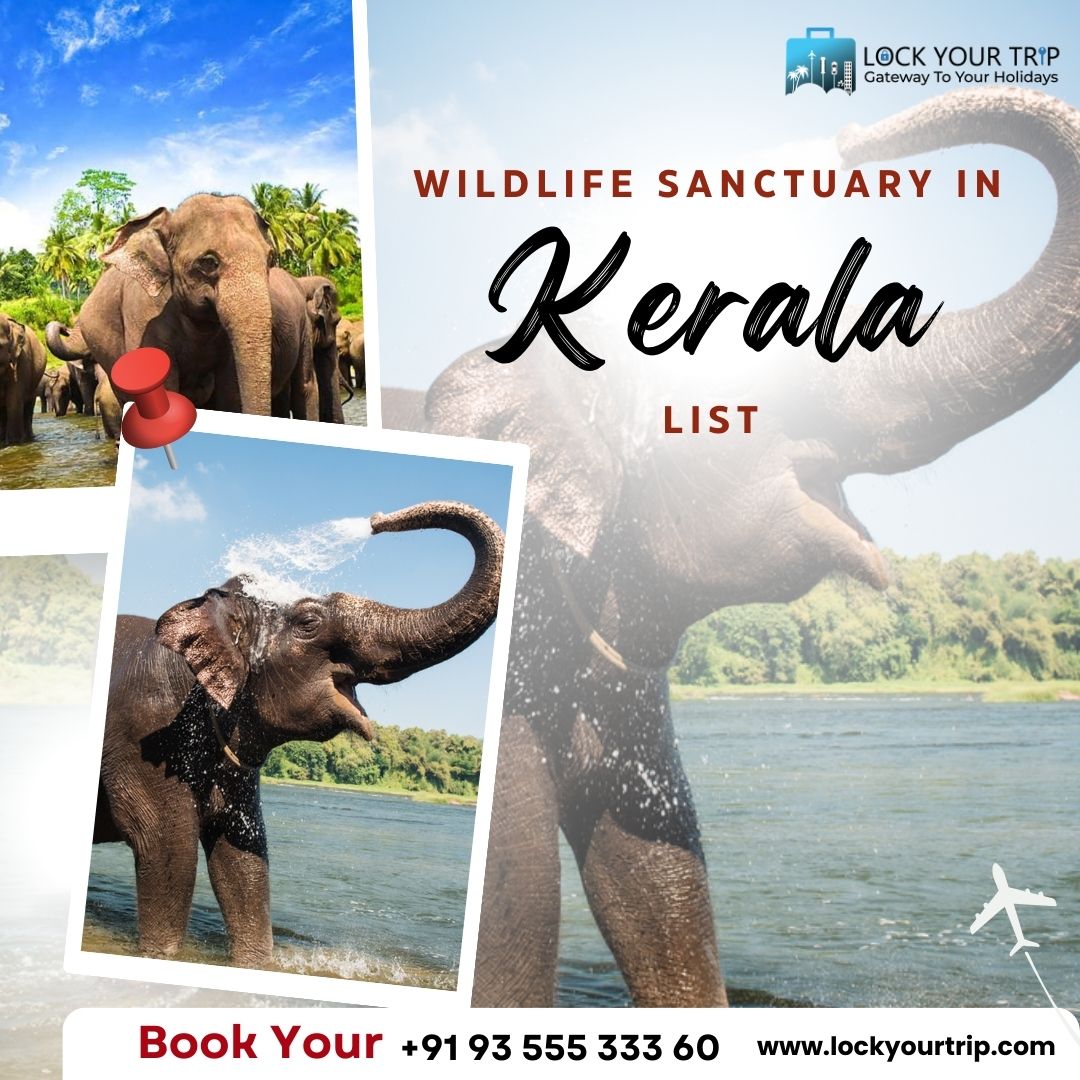Today, in this blog, we are going to explore the wildlife sanctuary in Kerala list. Undoubtedly, Kerala is God’s own country that attracts visitors due to its major attractions, lush landscapes, serene backwaters, and splendid beauty.
Besides this, the wildlife sanctuary of Kerala is also on top in among the top attractions of Kerala. The wildlife diversity of Kerala provides a unique glimpse to wildlife enthusiasts and nature lovers.
The following are the various wildlife sanctuaries in Kerala list, explore these wildlife diversity and have a great experience in natural surroundings:
Periyar Wildlife Sanctuary
The Periyar Wildlife Sanctuary, Kerala’s crown gem of protected regions, is where our trip starts. This sanctuary, which is tucked away in the Western Ghats, is proof of the state’s dedication to protecting its natural legacy. Covering a vast expanse, Periyar is well-known for its lush woods, scenic vistas, and, above all, the Periyar Lake, which lends a serene quality to the entire sanctuary.
Wayanad Wildlife Sanctuary
The Wayanad Wildlife Sanctuary, which is located in Kerala’s northern region, is our next destination. Wayanad is a mashup of rich cultural legacy and wildlife, as well as evidence of Kerala’s dedication to conservation.
Silent Valley National Park
We come onto the Silent Valley National Park as we continue to go into the center of Kerala. This park, which is hidden away in the Nilgiri Hills, is an unspoiled natural area free from human intrusion.
Neyyar Wildlife Sanctuary
Our tour of the Neyyar Wildlife Sanctuary, which is next to the Neyyar Dam, takes a spiritual turn. This sanctuary makes a great getaway spot in Kerala by skillfully fusing spiritual retreats with natural protection.
Eravikulam National Park
The Eravikulam National Park, a high-altitude refuge tucked away in the Anamalai Hills, is our ultimate objective. Wildlife enthusiasts must visit Eravikulam, the principal home of the critically endangered Nilgiri Tahr, renowned for its distinct environment.
Kumarakom Bird Sanctuary
Birdwatchers will find heaven at Kumarakom Bird Sanctuary, which is tucked away on Vembanad Lake. In this 14 square kilometre sanctuary, you can find more than 200 different bird species, including migratory species like darters and Siberian cranes. By boat, visitors may explore the reserve and take in the serene backwaters and avian symphony.
Parambikulam wildlife sanctuary
Parambikulam Wildlife Sanctuary is a haven for elephants, leopards, gaur, tigers, etc. Numerous native tribes call this refuge home, providing a distinctive cultural experience. The refuge offers boat trips, jeep safaris, and trekking.
Muthanga wildlife sanctuary
Muthanga Wildlife Sanctuary, which is situated in Wayanad, is well-known for its varied animals found in Kerala, which include dholes, tigers, leopards, and elephants. Trekkers and outdoor lovers frequent this refuge since it has several waterfalls and caverns.
The Ideal Time to Go to see animals found in Kerala:
Kerala’s wildlife reserves are best visited in the dry season, which runs from October to May. During this time of year, the favorable weather increases the likelihood of spotting animals around water sources.
Advice for Traveling to a Wildlife Refuge
- Make reservations well in advance, especially for visits during busy times.
- Put on sneakers that are appropriate for walking and hiking and comfy apparel.
- Bring a camera and binoculars to photograph the animals found in Kerala.
- Honor the environment by not polluting or upsetting the animals.
- Observe the staff’s and park guides’ directions.
Common questions we hear related to the trip to Kerala Wildlife Sanctuary:
- Are there any special conditions to enter Kerala’s wildlife sanctuaries
The majority of Kerala’s wildlife reserves need admission permits from its patrons. These are often available online or at the entry to the sanctuary. Following the guidelines is necessary to guarantee a fun and safe experience.
- What clothes and equipment should I bring with me when visiting a wildlife sanctuary?
Bring clothes that are lightweight and breathable for the tropical weather. Experts recommend wearing long sleeves and slacks to protect against the sun and insects. It’s important to have bug repellant, sunscreen, a hat, and comfortable walking shoes. If you intend to go on a boat tour, you might want to pack a lightweight rain jacket.
- Do tours with guides exist, and do you recommend them?
Yes, it’s strongly suggested you take one of the many available guided tours. Experienced guides make the trip more enjoyable by offering insights into the local flora and fauna, guaranteeing a safe trip, and raising the likelihood of seeing animals. For details about guided visits, get in touch with the management of the sanctuary.
- Can I enter the sanctuaries with my camera or binoculars?
In general, yes, binoculars and cameras are permitted. We urge them to capture the allure of the surrounding flora and fauna. Make sure nothing you bring with you disturbs the animals or contravenes any sanctuary regulations.
Are there places to stay inside or close to the animal sanctuaries?
A few wildlife sanctuaries include lodging options on-site, ranging from budget motels to environmentally conscious resorts. In addition, adjacent towns and cities frequently provide hotel possibilities. Advisors recommend booking lodging in advance, especially during the busiest travel seasons
- Does the amount of people who can enter the sanctuaries have any limits?
A daily visiting cap is a common practice in wildlife sanctuaries to reduce the damage to the ecology. It is advisable to check the official sanctuary website or contact the authorities to inquire about visitation restrictions and make any necessary reservations.
- Do kids have access to animal sanctuaries, and are there any age limitations?
There are often no age limitations and kids are welcome in animal reserves. When organizing a visit, parents should take into account the sanctuary’s characteristics, their child’s capacity to adhere to safety precautions and any possible effects on the local animals.
- Do the animal sanctuaries have food and drink available?
A lot of sanctuaries have spaces set aside for picnics, and some could even have canteens or stands selling simple snacks. It is advisable to carry water and food, especially if you intend to spend a lot of time exploring the sanctuary.
Last words
The wildlife sanctuaries or animals found in Kerala offer a unique opportunity to discover the rich biodiversity of this astonishing state. Seize affordable Kerala tour packages, and make hassle-free tour reservations from your home comfort.












One thought on “Animals Found in Kerala | A journey with Kerala tour packages”
Comments are closed.